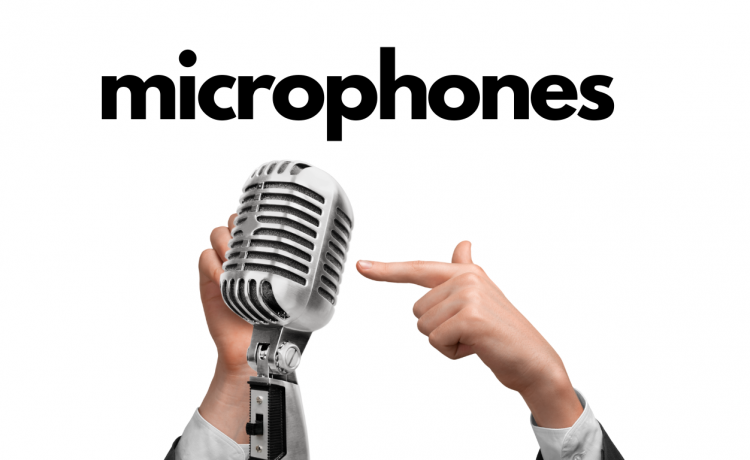If you’re a YouTuber who is just starting out and wants to create high-quality videos, then it’s important that you get the right equipment. The right microphone can make or break your video, so if you want to get the best possible results, it’s important that you know what type of microphone will work best with your setup.
In this article, we’re going to take a look at some of the best microphones for YouTube vlogging. We’ll discuss the different types of microphones that are available and then give our recommendations for each one. We’ll also include some reviews of each product so that you can see exactly what people are saying about them and decide whether or not they’re right for your needs.
Best Vlogging Mic

If you’re looking to record your YouTube vlogs with the best possible sound, you need a good microphone.
There are a lot of different types of microphones out there, and each one has its own pros and cons. So which one should you get?
The answer is: it depends. If you’re making videos that are meant for sharing online only, then any old mic will do. But if you want to use your mic for recording audio for video or in-person performances, then it’s important to find one that can capture high-quality sound.
The best microphones for YouTube vlogging are the ones that are easy to use, but also give you the control you need to get the capture sound you want.
Different types of microphones
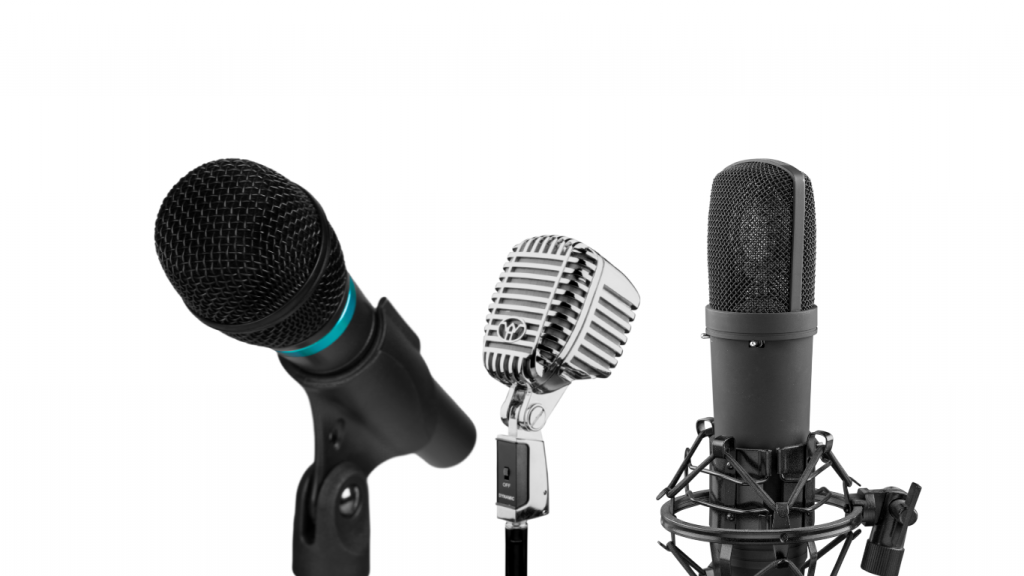
There are many different types of microphones, but the most important thing to know is that each one has a different purpose. Some are used for recording music or podcasts, while others are used for public speaking or singing. Here are some common types of microphones:
Dynamic microphones
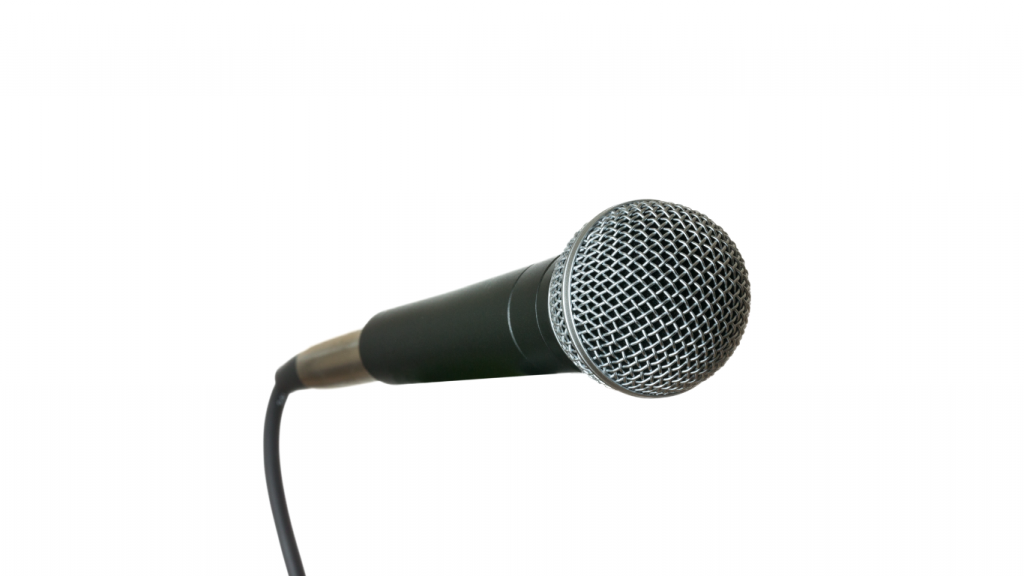
Dynamic microphones are the most common type in use today. They’re usually pretty straightforward—they’re just a coil of wire with a magnet attached to one end and a diaphragm (a flat piece of metal or plastic) at the other. When sound moves through the air and hits this diaphragm, it vibrates like a drum head causing fluctuations in the magnetic field which creates an electric current that can be sent to an amplifier or recording device. Condenser microphones use two tiny metal plates that generate an electric charge when sound waves hit them. Ribbon mics have thin ribbons of metal attached to their diaphragms which vibrate when they come into contact with sound waves.
but they don’t sound as good as condenser microphones. Dynamic mics work by using a magnet to move a diaphragm within the versatile microphone casing. This produces sound waves that are then converted into an electrical microphone signal by the mic’s circuitry. They’re ideal for live performances because they can handle high volumes without picking up background noise as easily as condenser mics do; however, they tend not to be very sensitive so they’re not great at picking up quiet sounds like vocals or acoustic instruments if there’s a lot of background noise in the room (like from traffic outside).
Condenser microphones
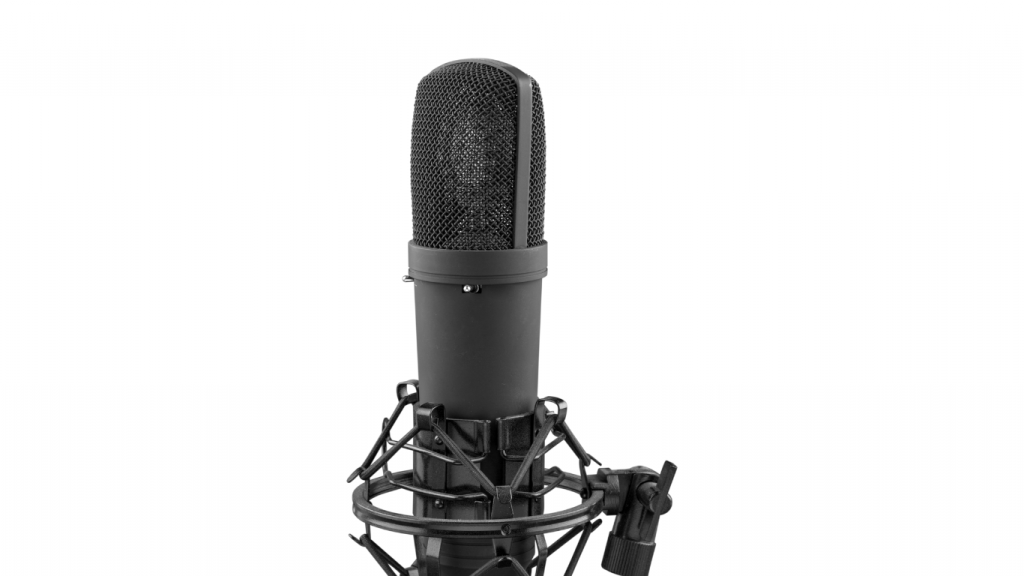
Condenser mics have been around for over 60 years now—they were developed in 1943 by Bell Labs scientists who wanted to make something better than their existing dynamic mic at capturing natural sound rather than just amplifying it like those older models did (which meant.
Condenser mics are more sensitive than dynamic mics, which means they pick up less background noise but require more amplification from your audio interface or mixer. They can be used for both live performances and recording purposes because they have a very flat frequency response–meaning that all frequencies are picked up equally well by the usb microphones (unlike dynamic mics where certain frequencies may be amplified more than others). Because these mics require more plug in power from your audio interface or mixer they are usually connected via XLR cables (as opposed to 1/4″ cables like dynamic mics).
Ribbon mics
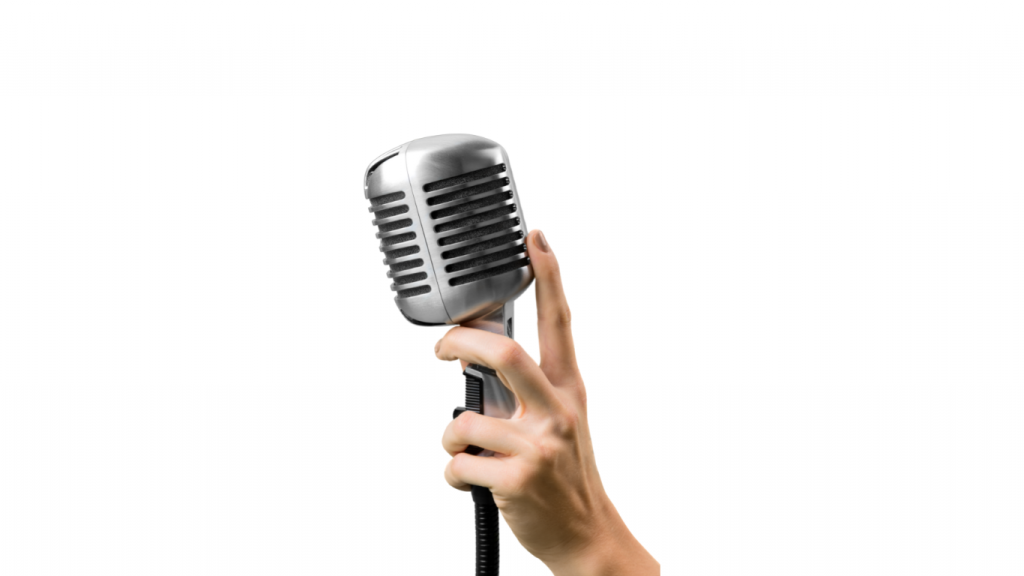
Ribbon mics are the most expensive kind—they tend to cost more than $1,000 each! But they sound amazing on anything from vocals to acoustic guitars to pianos. These are typically used for recording strings, horns, and other instruments with high frequencies like cymbals, tambourines, etc. They have a wider frequency response range than condenser mics do: from 10 Hz up into the millions for some models!
which are thin strips of metal that are placed close to the source of sound being recorded (usually an instrument). Ribbon mics tend to have extremely high quality reproduction at low volumes; however, they do require more maintenance than other types because their thin wire can become damaged if mishandled too often.
Lavalier Microphone
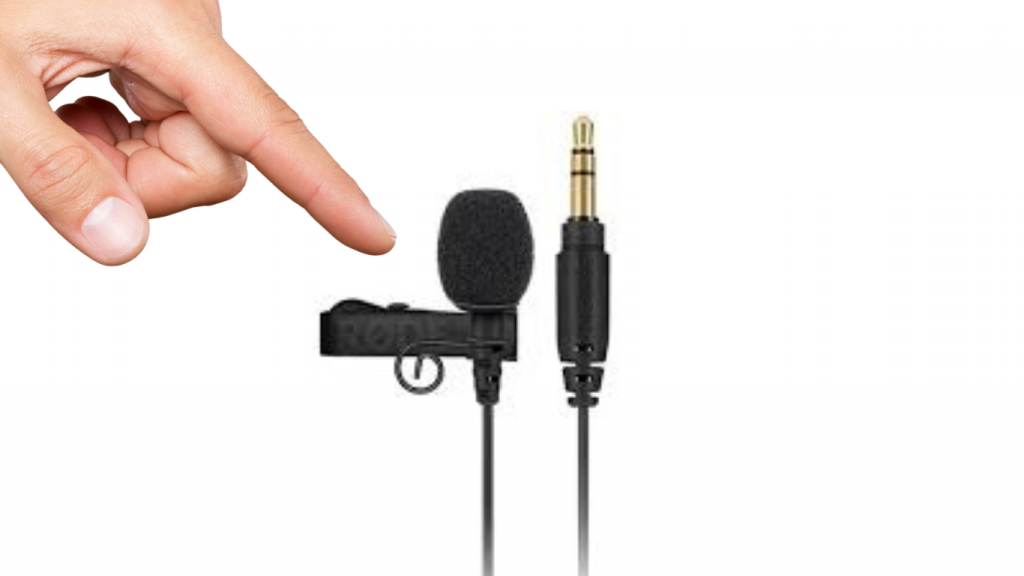
Lavalier mic are handheld devices used in film and television to pick up sounds. They’re ideal for capturing dialogue and speech, but they can also be used to pick up other audio like music or sound effects. Lav mic.
A lavalier microphone is a small, clip-on microphone. It’s often used in television and film production to record audio from the wearer’s clothing or body. This type of microphone is often used in situations where you don’t want to have a bulky usb mics attached to your clothes, such as when you’re interviewing someone and want them to feel natural and comfortable during their conversation.
Lavalier microphones are typically very small—about half an inch long for most models—and have a thin cable that connects them to the recording device. The cable is usually about four feet long so that it can reach from the subject to the camera operator without being too obvious on screen.
A lavalier microphone is also known as a lapel microphone or clip-on microphone because it attaches directly to your clothing or lapel via a clip or other means (such as velcro).
On Camera Microphone
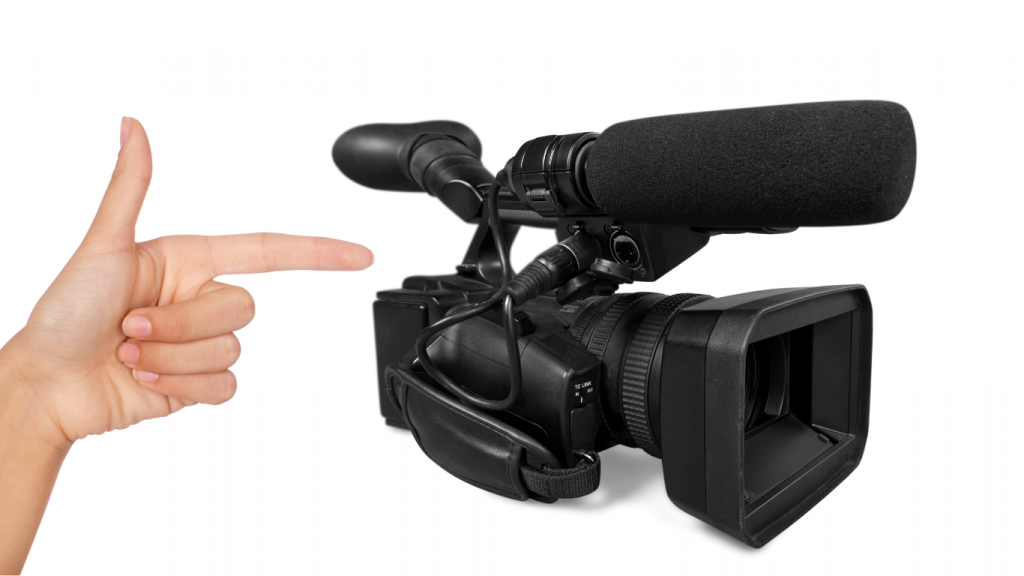
On-camera microphones are a type of microphone that is designed to be used with a camera. Unlike other types of microphones, it is usually made to be small and easily portable so that it can be taken anywhere and used on any device. They are often used on television shows and in other media productions when the host needs to use their own voice recording instead of having a stand-in actor do the talking for them. These wireless microphones system are also often used by people who want to make videos themselves but don’t have their own studio space where they can record everything professionally.
On camera mic are a type of microphone that is used in a variety of applications. They can be used to record audio for television, film, and other forms of media. On camera microphones are different from other types of microphones because they have an extended frequency range, which makes the audio they record easier to hear when played back.
On camera youtube microphone are often used in situations where it is impossible or impractical to use handheld or stationary microphones. They can also be used for situations where the actor does not want to wear a wireless microphone systems or cannot wear one due to wardrobe restrictions.
Shotgun Microphone
If you’re new to YouTube, you might be wondering what microphone is best for vlogging.
This shotgun mic is perfect for creating high-quality audio that’s easy to hear and understand. It’s also great for capturing unique sounds—like your voice bouncing off of walls or floors—and making them sound like they’re coming directly from your mouth. Plus, this shotgun mic has a built-in shock mount and windscreen, which will help reduce unwanted noise in your recordings.
If you’re looking for an affordable way to improve the quality of your YouTube videos, then check out our [product name] today!
Alright, so you’ve been vlogging for a while. You’ve got the hang of it, and you’re starting to get pretty good at it. But your audio quality? Not so much shotgun mics.
You’ve tried all the tricks—you’ve tried talking into your shirt, you’ve tried cupping your hand over the shotgun mic, but nothing’s working. Your videos sound muddy and cluttered, and you can’t seem to get rid of that echo effect no matter what you do in shotgun mics.
But don’t worry! We’ve got some solutions for you.
First off, if you’re shooting outside or in a room with lots of background noise (like traffic or other people), try putting your best microphone on a stand so that it’s closer to your mouth than the camera. That way, when the camera zooms out during editing, it should cover up most of the background noise instead of amplifying it.
If that doesn’t work for whatever reason (maybe there’s no room in front of where you’re filming), then try using an external microphone instead! It can pick up sound from farther away than your phone’s internal mic will allow—so if there are sounds happening behind or
Cardioid Mic
If you’re looking for a cardioid microphone for YouTube vlogging, we have a solution.
It is the perfect choice. It’s designed to pick up sound from in front of it and reject sounds from behind it and on either side, which makes it ideal for recording audio in any environment.
This features a cardioid mic polar pattern that blocks out undesirable noise from behind and to the sides, so your audience only hears what you want them to hear.
It delivers clear and accurate sound at any distance from the source thanks to its wide frequency response and high SPL handling capability.
Here are our top picks for the best microphones for YouTube vloggers:

Vlogging is all about being yourself, so why not record your voice recorder in a way that makes you feel like the best version of yourself?
The top 10 youtube microphones for vlogging will help you capture every detail of your voice and make it sound more natural, so that even if you’re just talking to the camera plug in power and not to anyone else, you’ll still feel great.
Best Microphones for vlogging
Rode VideoMic Pro
This microphone is great because it doesn’t require an XLR cable, so it’s much easier to set up. It also has a built-in shock mount and foam windscreen, so your voice will be crystal-clear.
The Rode wireless go is a great choice for vloggers who want to capture high-quality sound and have the budget to do so. This microphone has a built-in shock mount and all-metal construction, so you can use it in any setting and be confident that your audio quality won’t be compromised by vibrations or other noises around you. The directional pattern of this microphone is sensitive enough to pick up your voice clearly while minimizing background noise, so you can enjoy crisp, clean audio quality when recording at home or out in public.
This microphone comes with a tripod mount and an included foam windscreen, making it easy to set up wherever you’re filming your videos—and it even comes with an included Rycote Lyre suspension wireless system that helps reduce wind noise!
Blue Yeti Pro
The Blue Yeti Pro is another great option because it’s a USB mic that allows you to easily connect it with your computer or tablet (or iPhone!). It also comes with three different polar pattern settings and an adjustable gain control knob.
Audio-Technica AT2020USB+ – If you’re looking for something more affordable than the other options above, this is a great choice! It comes with a USB cable and microphone stand stand adapter for easy setup.
The Blue Yeti is the best microphone for vlogging and podcasting.
It has four different recording patterns: cardioid, bidirectional, omnidirectional and stereo. It allows you to record in high definition audio quality, with a frequency response of 20Hz-20KHz.
The Blue Yeti can also be used as an audio interface for your computer or laptop, allowing you to record vocals and instruments at the same time. You can also use it to record interviews or podcasts.
This microphone is perfect for anyone who wants to start a vlog or podcast but doesn’t have the budget for expensive equipment. The Blue Yeti Pro costs less than $200 and works great!
Blue Snowball iCE Condenser Microphone
The Blue Snowball iCE Condenser Mic is a great choice for vloggers who want to capture high-quality audio but don’t want to spend too much money. This microphone is not only easy to use, but it also comes with an omnidirectional polar pattern that ensures the sound you record is clear and crisp. Because of its compact design and built-in shock mount, this mic is perfect for those who want more control over their excellent audio quality recordings without having to go through the hassle of purchasing additional equipment.
The Blue Snowball iCE Condenser Mic is a great choice for vloggers who want to add more excellent sound quality to their videos. This mic has a cardioid polar pattern, which means that it will pick up great audio quality from the front of the mic and reduce sounds from the sides and back. It also features a built-in headphones jack that allows you to monitor your audio without having to use an external mixer or interface. The Snowball iCE is compatible with most computers, including Macs and PCs, as well as iOS devices like iPhones and iPads.
The Blue Snowball iCE Condenser Mic comes with a carrying case so you can easily transport it between shoots or store it when not in use. It also comes with a USB mic cable and mic stand adapter so you can get started right away after unboxing this on camera microphone!
Rode SmartLav+ Lavalier Mics for iPhone and Smartphones
The Rode SmartLav+ Lavalier Mics or Lavalier microphone for iPhones and Smartphones is a sleek way for vloggers to record their videos without having to worry about wires or other types of interference getting in the way of their recording process. This on camera microphone comes with everything you need in order to get started right away – including an adapter that allows you to connect your phone directly into your computer via USB mic port (compatible with Mac computers only). You can also use it with other devices such as iPads or Android tablets if needed!
Sony ECM-XYST1M Stereo Microphone
This is a great option if you’re looking for something portable, but still want good sound quality and durability.
It’s got an internal shock mount system that reduces noise caused by handling and vibrations, which is especially helpful if you’re going to be moving around while recording.
It’s also got a low cut filter that helps eliminate unwanted low frequencies like wind or traffic noise.
The Sony ECM-XYST1M is by far the best microphone for vlogging. It’s got an incredible frequency response that can pick up everything from the deepest bass notes to the highest treble notes. And it’s got great sound isolation, so it won’t pick up noise or distortion from other sources like cars or people talking nearby. Plus, it has a built-in shock mount so your voice comes through loud and clear even when you’re walking around or moving around in general!
This is a great beginner mic for vloggers who want something simple and affordable. The sound quality is good enough for most video projects but not professional recordings. It should work well for most people doing solo vlogs or podcasts on YouTube as long as they don’t have too much background noise around them (for example: in an open space like outside).
Shure MV51 Digital Condenser Microphone
This is a great option if you want something with really good sound quality (and are willing to pay for it). It has a built-in pop filter that reduces popping sounds when recording vocals, and comes with a carrying case so it’s easy to transport from place to place.
If you’re looking for something that can capture a wider range of sounds than just voice, then this is your best bet. The Shure MV51 captures more high and low frequencies than any other microphone out there—it’s even been used by NASA to record sounds from space! Plus, its built-in compression makes sure that your voice sounds clear no matter what environment you’re recording in (so long as it’s quiet enough).
This mic is compatible with any device that has an XLR input jack, and it has extra bass roll-off for eliminating unwanted sounds like wind or traffic noise from distracting your audience as they watch your videos online or on television screens at home in their living rooms or bedrooms where they’re relaxing after work each day before heading back out into the world again tomorrow morning when they wake up early enough to catch their bus or train before heading off to work so they don’t miss any deadlines while still trying their best not crash into too many other people on bikes or cars while riding over potholes filled in with asphalt.
Movo WMIC80 Lavalier Lapel Wireless Microphone System with Transmitter/Receiver and 3 Replaceable Ear Gels + USB Receiver (Black)
If you’re looking to add some extra sound quality to your vlogs, we’ve got the perfect microphone for you. The Movo WMIC80 Lavalier Lapel Wireless Microphone System with Transmitter/Receiver and 3 Replaceable Ear Gels + USB mic Receiver (Black) is a high-quality wireless mic system that’s perfect for vlogging microphone. It features a cordless, lavalier lapel mic for easy placement and mobility, so you can focus on what matters—your content! It also comes with three replaceable ear gels so you can get just the right fit for your needs. The transmitter and receiver both feature an LCD panel display so you can check battery life or rechargeable batteries at a glance, which is super handy when you’re on the go!
The Movo WMIC80 Lavalier Lapel Wireless Mic System with Transmitter/Receiver and 3 Replaceable Ear Gels + USB Receiver (Black) is available now on [website].
Audio Quality
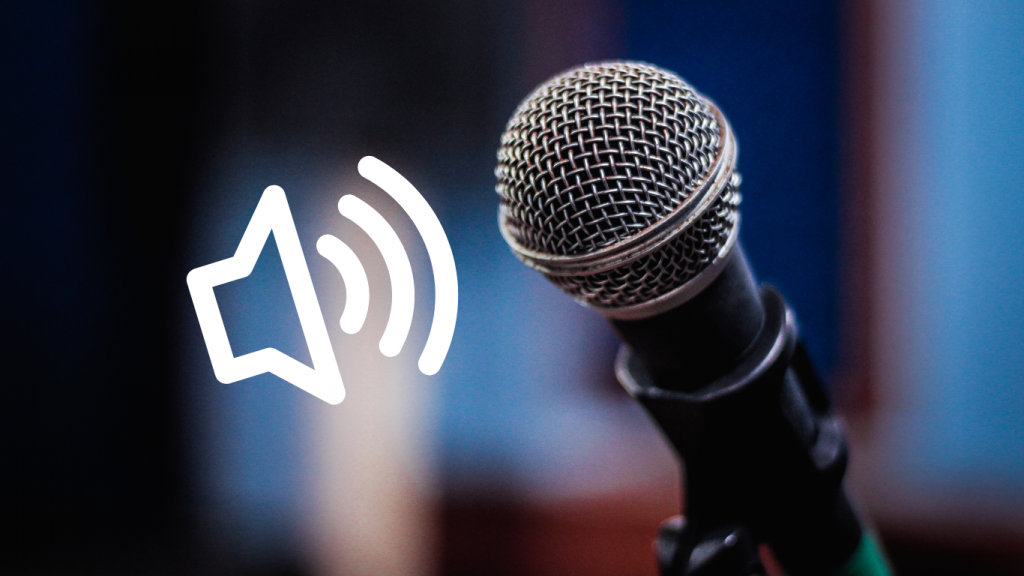
If you’re looking to buy a microphone for vlogging, there are several factors to consider.
First of all, you’ll want to think about your budget. If you’re on a tight budget, you can get a decent microphone for $100 or less. However, if you’re willing to invest more money into your video setup, then you might be able to afford a higher-end microphone for better sound quality and overall performance.
You also need to consider how portable the microphone is going to be. If you plan on traveling with it often, then it needs to be easy to pack up and transport without having any issues with getting tangled up in wires or falling over when tipped over accidentally during travel.
Another thing that’s important when buying microphones for vlogging is their size: larger microphones tend not only to offer better decent audio quality but also tend to look better too—and this isn’t just because they have nicer designs either! People often associate smaller microphones with being “cheap” quality while larger ones are seen as more professional because they are used by professionals who may be recording music in studios or doing voiceovers for TV shows or movies; so if you
What to think about when buying a microphone for vlogging
When it comes to choosing a microphone for vlogging, you have to be careful.
You have to consider:
– The sound quality of the microphone
– The price of the microphone
– The size and weight of the microphone
What Makes Built-In Camera Microphones Bad?
Built-in camera microphones are great for capturing your video, but they’re not so good at capturing audio.
Built-in cameras have a microphone you can use to record audio directly from the camera, but these built-in microphones have a number of downsides.
First, they’re not very good at recording sound. The built-in microphone on most camera’s hot shoe is generally quite poor quality and will pick up lots of background noise or other distracting elements that can get in the way of your message.
Second, they can’t be used in tandem with external microphones (like a lavalier or shotgun mic or shotgun microphones), which means that you’ll need to choose between using your built-in microphone and using an external one.
Third, if you’re shooting in a situation where it’s difficult to get close enough to a subject without getting in the shot yourself (such as interviews), then using a built-in camera’s on board mic may not be ideal because there’s no way around having yourself recorded as well.
The compact on camera microphone are the worst possible option for recording sound with your camera. Why? Because the built-in microphone is the one that’s closest to the on camera shotgun microphone lens and therefore picks up the most mechanical sounds from your camera.
When you’re filming, there are all kinds of mechanical sounds happening—the shutter opening and closing, focus rings being moved around, etc. These sounds can be picked up by your built-in microphone and will ruin your audio track if you don’t have an external microphone connected to get rid of them.
So what’s an external microphone? It’s a small piece of equipment that attaches to your camera and allows you to record sound without having mechanical vibrations interfere with it.
Wireless Microphones
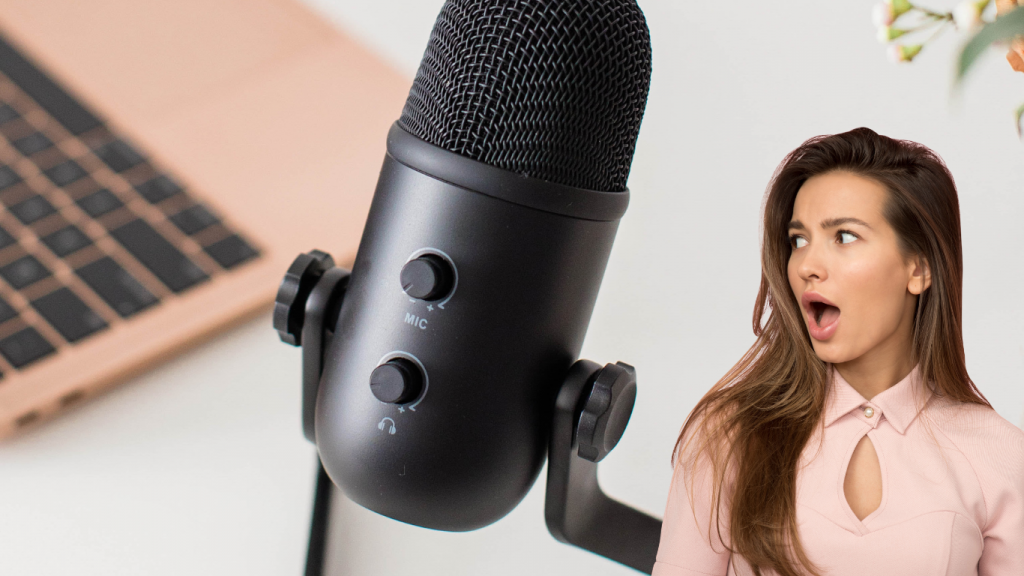
Best Studio Mics For YouTube
If you’re a YouTuber, chances are you’ve had to record in the same room as your computer. This can be a huge problem because the sound quality of your videos can suffer—especially if you use a laptop or tablet to record them.
The good news? You don’t have to sacrifice your video quality just because you want to do things on the cheap. There are tons of great options for studio mics for YouTube that will make your recordings sound like they were done in an actual studio—even if you’re doing them from the comfort of your own home!
These days, it’s easier than ever to get great sound out of an inexpensive mic—especially if you know what to look for when shopping around! That’s why we’ve put together this list of our favorite studio microphones for YouTube videos:
1) Blue Yeti USB Microphone – Best Overall Pick
This is our top pick for best overall microphone for YouTube videos because it has everything you could possibly want in a high-quality mic and then some: it’s compact and easy-to-use; it comes with multiple pattern options (super cardioid polar pattern, omnidirectional, stereo); it can be used with both Macs and PCs.
WHEN BUYING A MICROPHONE FOR VLOGGING, WHAT TO CONSIDER
As was stated at the beginning of the article, your decision will mostly be influenced by your needs. Here are some questions you can ask yourself to identify the sort of microphone you need as well as some things to watch out for when deciding which precise model you want to buy and what features could be crucial to you. It’s possible that you aren’t even sure what your needs are yet.
Are you intending to merely slouch in front of your camera and converse with it forever? If your main requirement for a vlogging microphone is the ability to place it on your desk, put it on, press Record, and move in the same setting each time, then
Will the frequency you choose to use if you go wireless be permitted anywhere you utilize it? – The frequencies that are accessible to the general public without a license are subject to varying limits depending on the country. Because of this, all of the devices on this list operate at 2.4 GHz, the same range of frequencies as traditional WiFi. Certain UHF frequency microphones could be completely acceptable in one nation but forbidden to use without a permit in another. This is absolutely something you’ll want to be aware of, and it’s a problem DIYP has run into after learning that mics purchased in the US cannot be used in the UK without a license.
Will you feature other individuals in your videos? A dual wireless microphone kit is probably going to be your best choice if you intend to routinely include other people in your films, especially if it will be a chat or interview where you will be talking back and forth with each other. Most dual-microphone kits allow you to record one microphone to the left channel and the other microphone to the right channel, allowing you to simply balance and mix the two together in post-production such that neither is overpowering the other. If you and the subject are both directly in front of the camera, you might be able to get away with using an on-camera microphone. However, if your voices are considerably different in loudness
Will you move about in front of the camera while putting it down? – Again,
But before you start shopping, there are a few things you should keep in mind when choosing a microphone for vlogging.
1. What are your goals? Do you want to set up a studio in your home office and record videos regularly, or do you just want something that will work well for one-off videos? If the latter is true, then you probably don’t need to spend as much money on something that’s going to be sitting on your desk all day long.
2. What kind of content do you want to record? Is it just voiceover work, or will there be music playing in the background? You’ll need to consider how much sound will be coming from other sources when picking out a mic. You also might want to think about whether or not your audience will be able to hear those sounds too (if so, consider getting an external mic).
3. How often do I plan on using this microphone? If this is going to be something that gets used quite frequently throughout the week (or even each day).
Conclusion
The best vlogging microphones on YouTube are the ones that help you to get the most out of your content.
Of course, there are a few key factors to consider when buying a microphone for vlogging: how much money you want to spend, how much noise reduction you need, and how portable you want your mic to be. If you’re just starting out, it’s probably best to go with a cheap option until you get a feel for what works best for your voice and style.
You can also think about whether or not you want a shock mount or pop filter. A shock mount will reduce noise from handling the microphone and a pop filter will reduce the amount of plosives in your speech (those p sounds). These things are nice but not necessary depending on what type of sound quality you’re looking for.
The main thing is that you get what works best for YOU!

